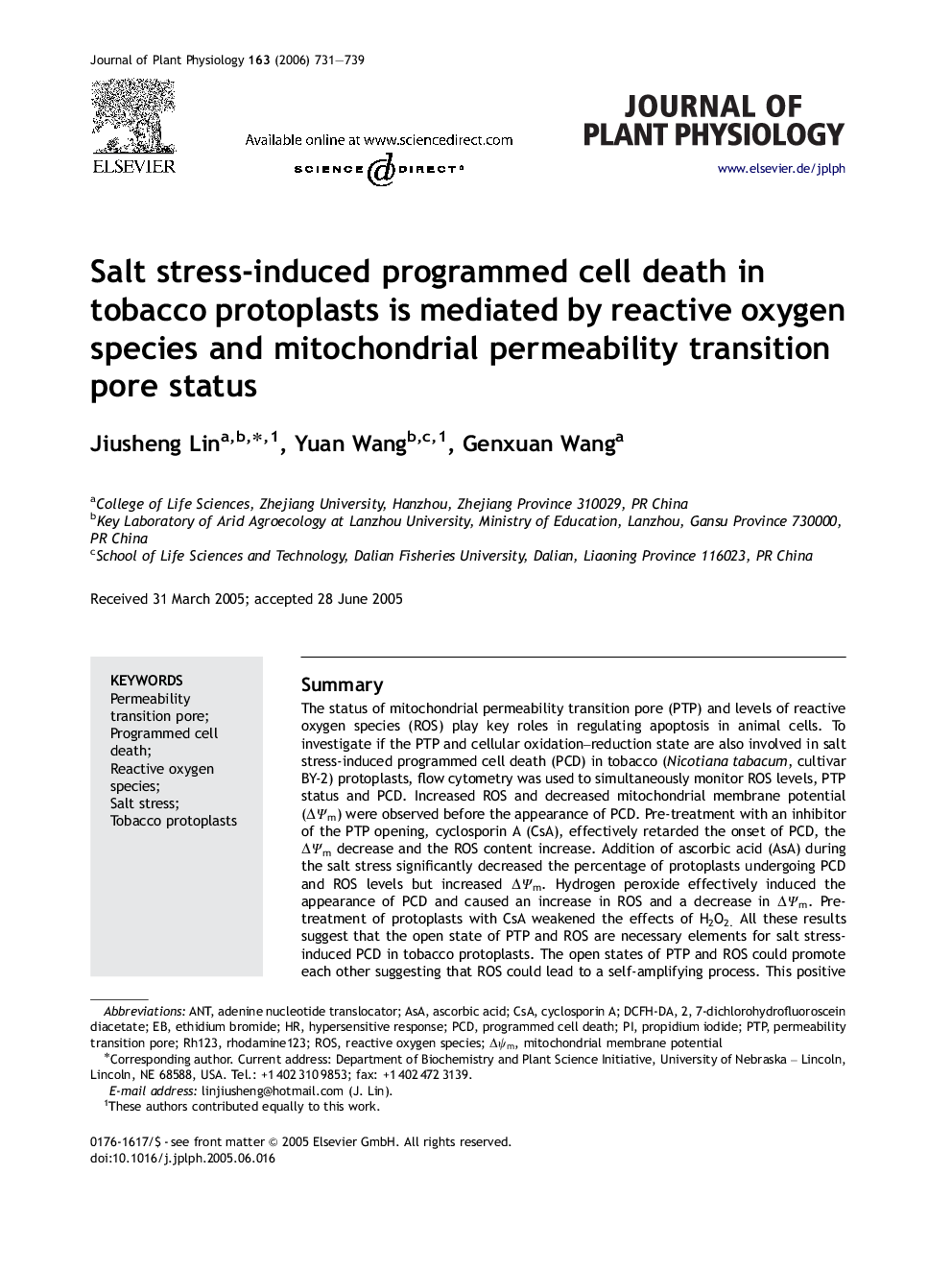| Article ID | Journal | Published Year | Pages | File Type |
|---|---|---|---|---|
| 2057479 | Journal of Plant Physiology | 2006 | 9 Pages |
SummaryThe status of mitochondrial permeability transition pore (PTP) and levels of reactive oxygen species (ROS) play key roles in regulating apoptosis in animal cells. To investigate if the PTP and cellular oxidation–reduction state are also involved in salt stress-induced programmed cell death (PCD) in tobacco (Nicotiana tabacum, cultivar BY-2) protoplasts, flow cytometry was used to simultaneously monitor ROS levels, PTP status and PCD. Increased ROS and decreased mitochondrial membrane potential (ΔΨm) were observed before the appearance of PCD. Pre-treatment with an inhibitor of the PTP opening, cyclosporin A (CsA), effectively retarded the onset of PCD, the ΔΨm decrease and the ROS content increase. Addition of ascorbic acid (AsA) during the salt stress significantly decreased the percentage of protoplasts undergoing PCD and ROS levels but increased ΔΨm. Hydrogen peroxide effectively induced the appearance of PCD and caused an increase in ROS and a decrease in ΔΨm. Pre-treatment of protoplasts with CsA weakened the effects of H2O2. All these results suggest that the open state of PTP and ROS are necessary elements for salt stress-induced PCD in tobacco protoplasts. The open states of PTP and ROS could promote each other suggesting that ROS could lead to a self-amplifying process. This positive feedback loop may act as an all-or-nothing switch, which is in good accordance with the hypothesis that PTP is an important coordinator and executioner of PCD in both animals and plants.
